TDS2024C Teardown
Tektronix sent me a new TDS2024C! Now what do we do with new $1500 toys?WE RIP THEM APART (⌐■_■)っ═一 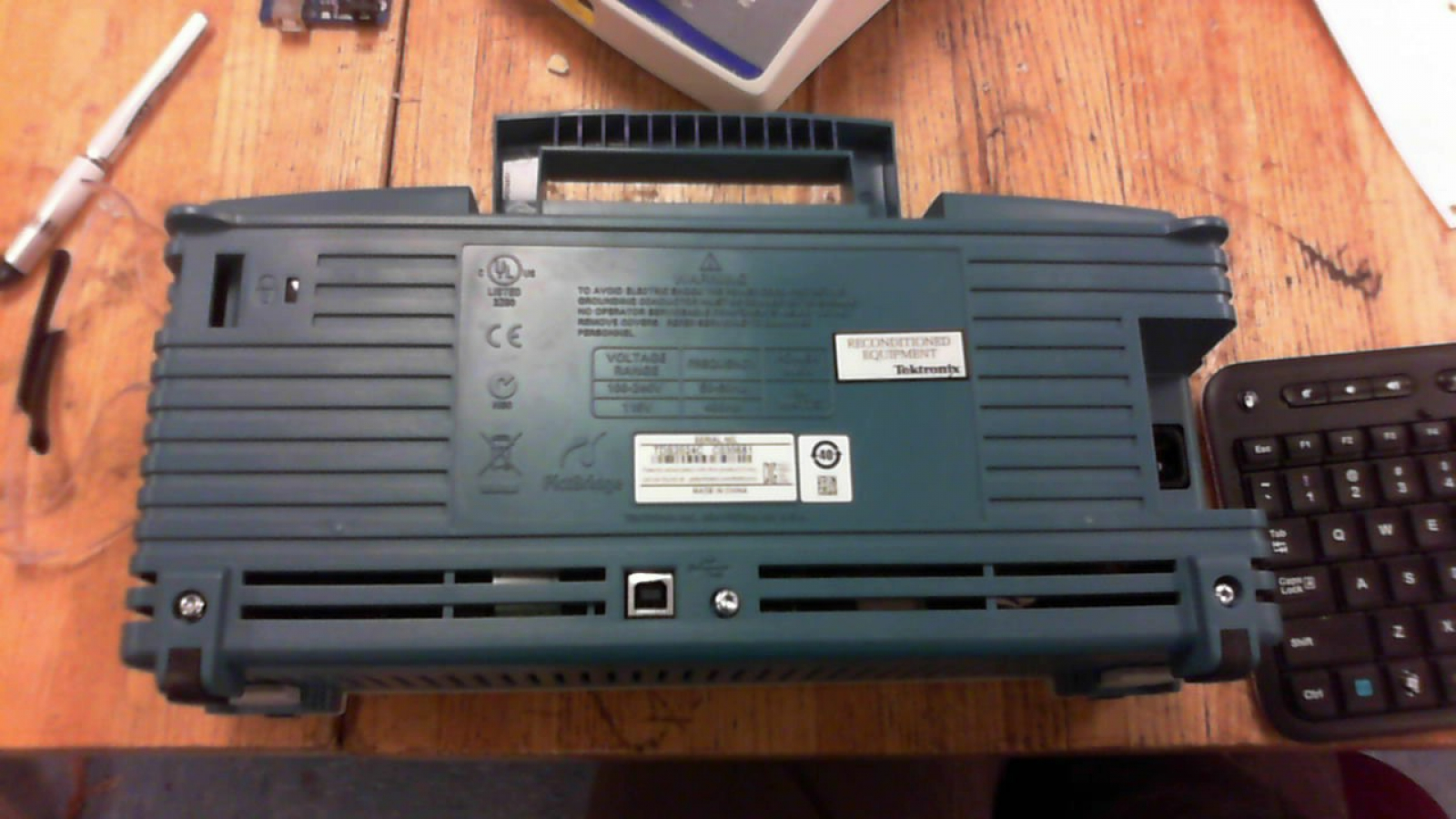 But inside, it’s still pretty boring! There’s a power supply, a main-board, a ribbon for the display panel and a wire harness for the human interface panel.
But inside, it’s still pretty boring! There’s a power supply, a main-board, a ribbon for the display panel and a wire harness for the human interface panel.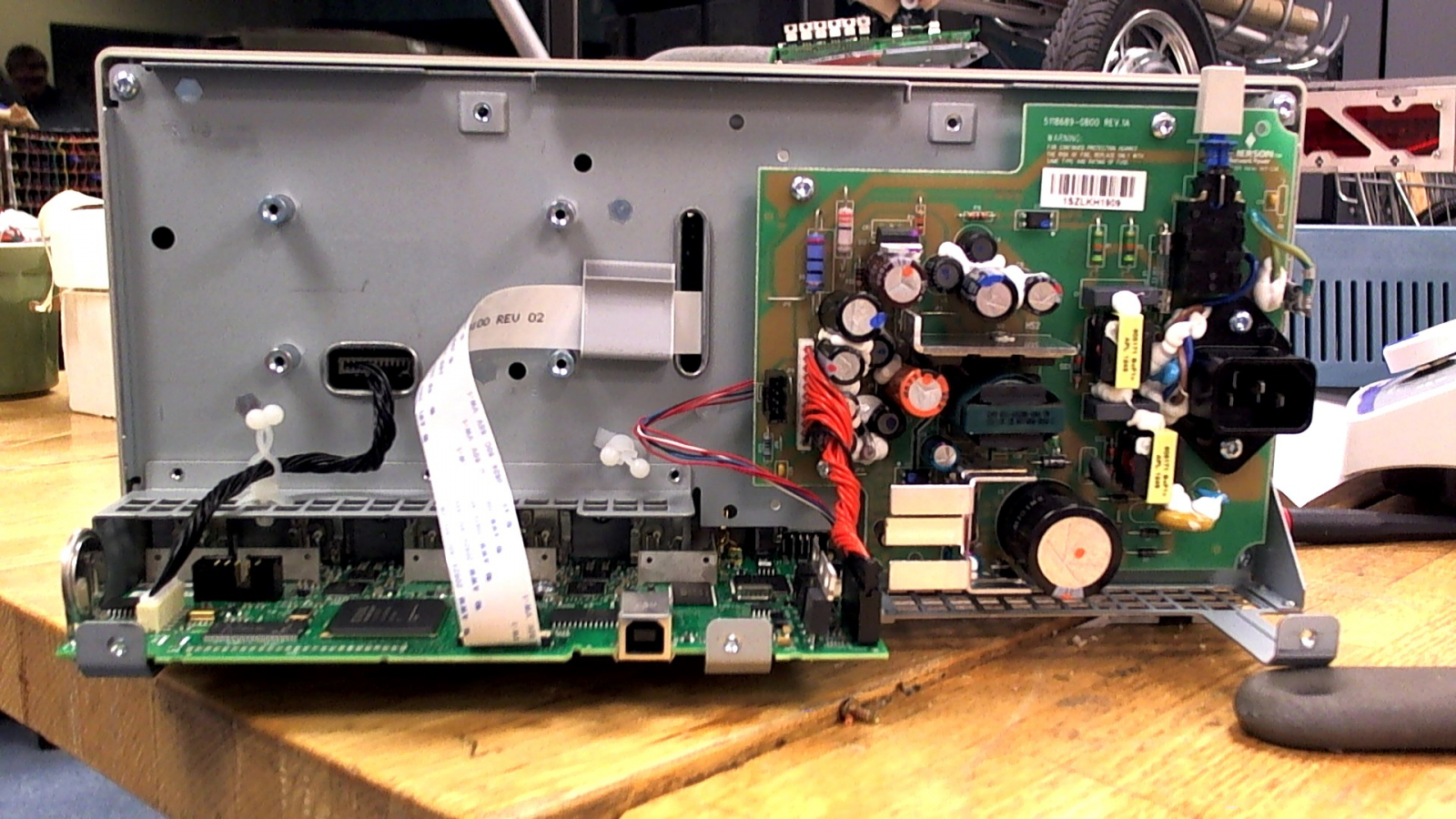 The power supply itself is noteworthy though. Interestingly enough it’s all through-hole constructed, on a single sided PCB. Like most SMPS’s, it’s a flyback converter, and a very well filtered one at that (second order LC on the input). Everything is well-glued, isolation slots are properly routed, what needs cooling is heatsinked well and overall, it’s a very nice power supply. The switch is hefty, and the IEC connector is nicely screwed into a big metal frame.I don’t see this failing anytime soon. Though it doesn’t mean much to anyone looking to buy one [it’s custom], it’s an Emerson Networks 7001574-J100 power supply, Rev 1A. It’s output voltages are: -4.22V, +3.3V and +5.8V. Some of these are odd voltages, but I know exactly why they’ve chosen them…
The power supply itself is noteworthy though. Interestingly enough it’s all through-hole constructed, on a single sided PCB. Like most SMPS’s, it’s a flyback converter, and a very well filtered one at that (second order LC on the input). Everything is well-glued, isolation slots are properly routed, what needs cooling is heatsinked well and overall, it’s a very nice power supply. The switch is hefty, and the IEC connector is nicely screwed into a big metal frame.I don’t see this failing anytime soon. Though it doesn’t mean much to anyone looking to buy one [it’s custom], it’s an Emerson Networks 7001574-J100 power supply, Rev 1A. It’s output voltages are: -4.22V, +3.3V and +5.8V. Some of these are odd voltages, but I know exactly why they’ve chosen them… Take a look in the top left corner of the mainboard: there’s a whole bunch of linear regulators! Specifically, a circuit that has a 0.7V intrinsic potential loss, hence the 5.8V supply for this board. There’s also a negative voltage source on there, similarly, only a few tenths of a volt below what’s fed to it. One might wonder why these are even here.Two words; noise floor. In a scope it must be as low as possible, and the way you do that is through linear regulation, and active filtering.
Take a look in the top left corner of the mainboard: there’s a whole bunch of linear regulators! Specifically, a circuit that has a 0.7V intrinsic potential loss, hence the 5.8V supply for this board. There’s also a negative voltage source on there, similarly, only a few tenths of a volt below what’s fed to it. One might wonder why these are even here.Two words; noise floor. In a scope it must be as low as possible, and the way you do that is through linear regulation, and active filtering.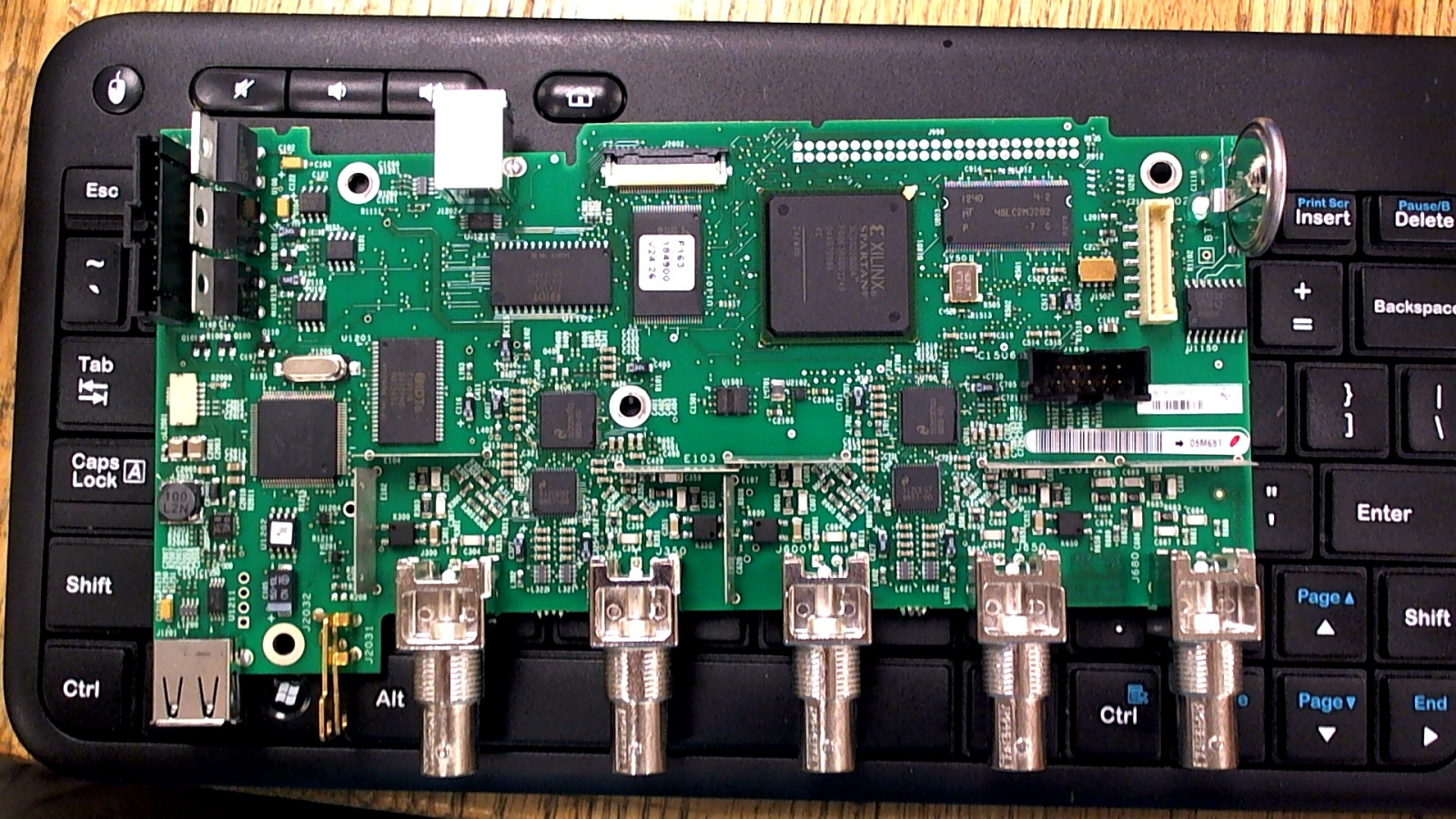
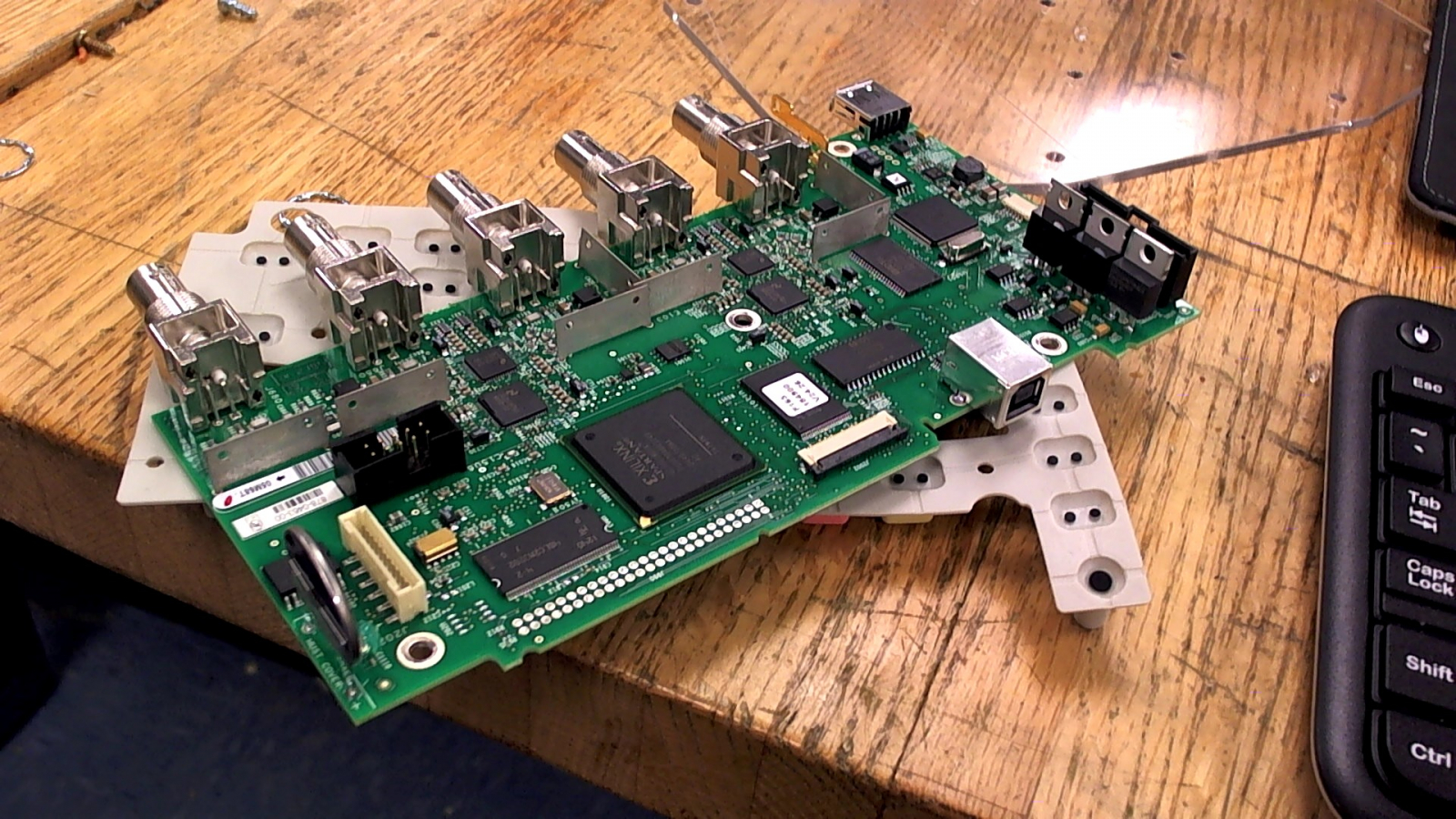 Interestingly enough, this board has no EMI shielding at all. There are some little castle-wall plate things, but I’d be shocked if those did very much. Not only that, but there’s no metal enclosure around any of this circuitry; not even metallized plastic. Essentially, all of these signal paths are wide open for the world to see, and thus open for ambient RF to come and screw things up. Noticeably, too: turning on my Metcal near this scope increases the noise floor by almost 20mV! Not good.On the front panel there’s nothing special: buttons, LEDs, rotary encoders and an LED backlit display. Interestingly enough though, this is an IPS display. For those who don’t know, IPS, or in-plane-switching, is a type of LCD technology that allows for excellent color rendition, ultra-wide angle viewing and an all-around better LCD experience. It’s actually a huge improvement over past models, if you ask me.
Interestingly enough, this board has no EMI shielding at all. There are some little castle-wall plate things, but I’d be shocked if those did very much. Not only that, but there’s no metal enclosure around any of this circuitry; not even metallized plastic. Essentially, all of these signal paths are wide open for the world to see, and thus open for ambient RF to come and screw things up. Noticeably, too: turning on my Metcal near this scope increases the noise floor by almost 20mV! Not good.On the front panel there’s nothing special: buttons, LEDs, rotary encoders and an LED backlit display. Interestingly enough though, this is an IPS display. For those who don’t know, IPS, or in-plane-switching, is a type of LCD technology that allows for excellent color rendition, ultra-wide angle viewing and an all-around better LCD experience. It’s actually a huge improvement over past models, if you ask me.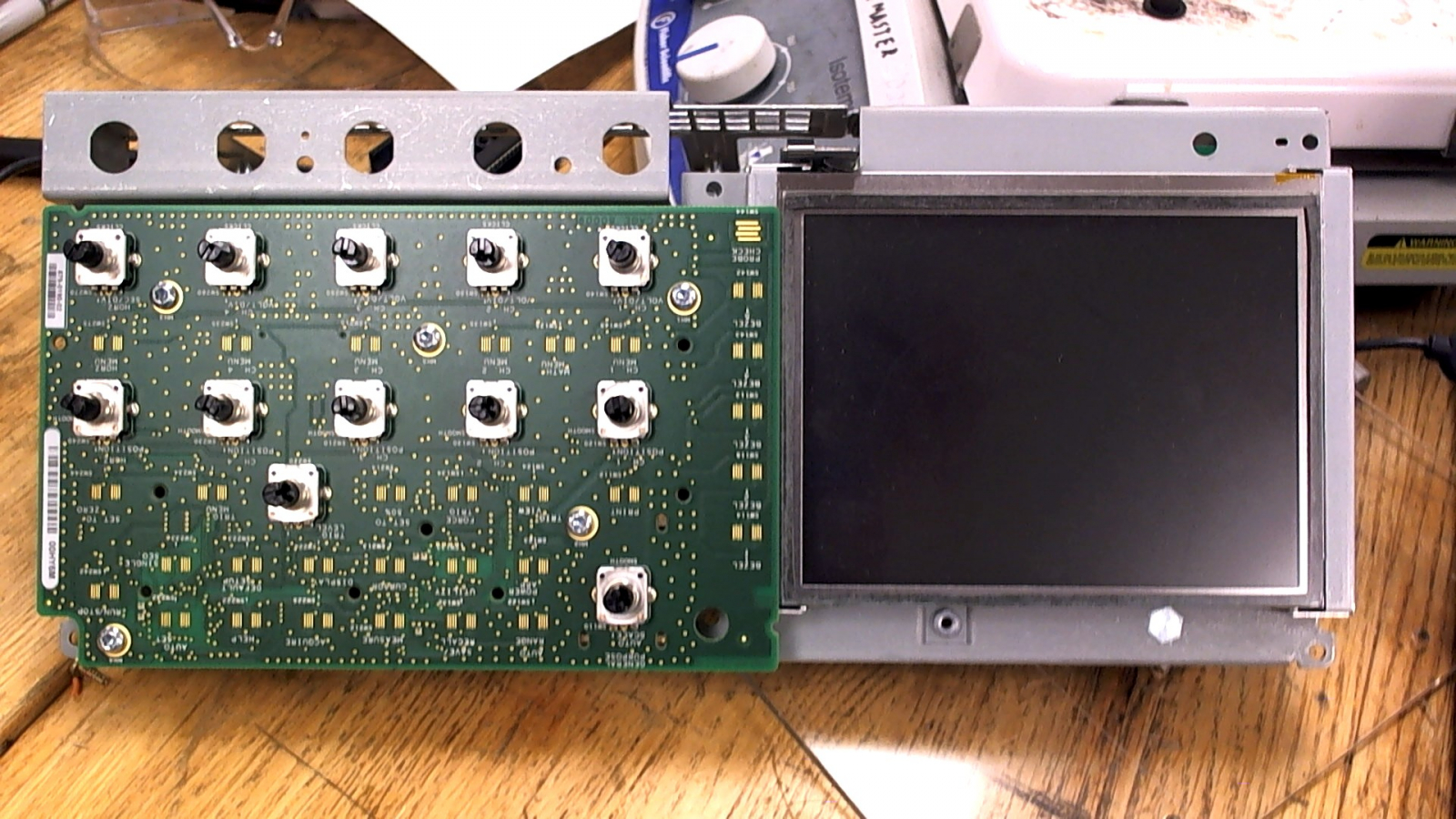
The Finish
Let’s look at this one from behind. Not much going on there, apart from a USB device port, FCC information, a kensington lock and various certification info. All and all, pretty boring.



What chips are on this board?

